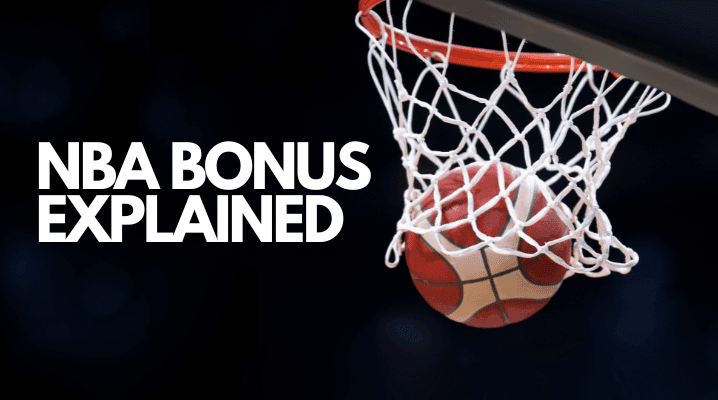Basketball is a game that thrives on speed, precision, and a deep understanding of its intricate rules. NBA players, coaches, and fans alike must be proficient in these regulations to excel in or simply enjoy the game. One such rule that has piqued the interest of many is the NBA bonus. Despite its critical impact on game strategy, many fans still find the NBA bonus somewhat perplexing as there are differences between the NBA, college and high school basketball rules. So, let's dive deep into the realm of the NBA, focusing primarily on the NBA bonus, and shed light on all there is to know about it.
What Exactly Are the NBA Bonus Rules?

In simple terms, the NBA bonus comes into effect when a team commits a certain number of fouls within a single quarter. This magic number in the NBA world is five. When a team has reached its fifth foul of the quarter, we say it's “in the bonus”. From this point forward, each subsequent non-shooting foul by the offending team will result in two free throws for the team on the receiving end of the foul. This penalty, intended to discourage excessive fouling, is commonly known as the ‘NBA bonus'.
NBA Bonus: How Does It Work?
To grasp how the NBA bonus works, it's important to understand the different types of fouls. Personal fouls, technical fouls, offensive fouls – they all contribute to the foul count. However, it's crucial to remember that team fouls reset each quarter. Hence, even if a team ends one quarter in the bonus, they begin the next quarter with zero team fouls, a fresh start if you will.
The NBA Bonus and the Double Bonus Situation
You may have heard the term ‘double bonus' thrown around, especially in college basketball conversations. However, in the NBA, there is no differentiation between a bonus and a double bonus. When a team has reached its fifth team foul in a quarter, every subsequent non-shooting foul results in two free throw attempts, rendering the ‘double bonus' concept irrelevant.
The One and One Rule in NCAA Basketball
In college basketball, however, things are a little different. Upon reaching the seventh team foul in a NCAA game, the opposing team gets one free throw, and if they make it, they get another – the ‘one and one' rule. When the foul count reaches ten, the double bonus is activated, granting two guaranteed free throws.
NBA Bonus in the Last Two Minutes of a Quarter: A Special Case
There are twelve minutes in an NBA quarter, but an exceptional NBA rule comes into effect during the last two minutes. No matter how many fouls a team has committed up to that point, starting from the last two minutes, every team's second foul automatically triggers the basketball bonus. This specific rule has a major impact on gameplay, particularly in tightly contested matchups, and can be a real game-changer.
NBA Bonus vs. College and High School Basketball Bonus Rules
Compared to the NBA, both college and high school handle the basketball bonus rule differently. As mentioned earlier, the ‘one and one' rule applies after the seventh team foul and a double bonus situation arises after the tenth team foul in college basketball. High school rules can vary, but generally, they follow a similar pattern to college rules, thus differing from the NBA Bonus structure.
The NBA Bonus and Its Significant Impact on Gameplay
Understanding the basketball bonus and its implications can greatly affect game strategies. For instance, coaches may opt to shuffle their line-ups to prevent players prone to fouling from accumulating unnecessary fouls. Similarly, teams that are in the NBA Bonus may drive to the basket more frequently, trying to draw fouls and earn ‘free' points at the free-throw line. In essence, the NBA Bonus rule can turn the tide of a game if utilized strategically.
Basketball Bonus FAQ:

What is bonus in basketball?
In basketball, the term “bonus” refers to a situation in which one team accumulates a certain number of team fouls, which results in the opposing team being awarded free throws for each subsequent foul.
How Many Fouls Until the NBA Bonus?
In the NBA, a team enters the bonus situation after committing five fouls in a quarter.
What Types of Fouls Count Toward the NBA Bonus?
In the NBA, personal fouls and technical fouls by the defensive team count towards the foul bonus. However, offensive fouls do not contribute to the team foul total.
What Are Overtime NBA Bonus Rules?
In overtime periods, the foul bonus rule applies after the fourth team foul.
What is a “Foul to Give” in the NBA?
A “foul to give” occurs when a team has committed fewer than four fouls in a quarter (fewer than three in the last two minutes). This means they can commit a non-shooting foul without sending the opposing team to the free-throw line, disrupting their offensive play without severe penalty. Having a “foul to give” can be a powerful strategic advantage in close games.
Is there a double bonus in the NBA?
There is no NBA double bonus. The double bonus only applies to NCAA and high school basketball games.
